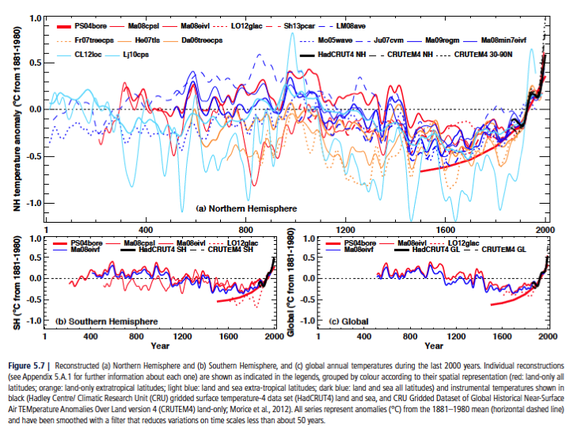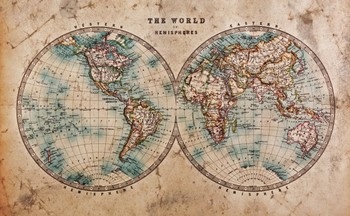A reader sends a copy of the full text. This is a shocker. Take this on the little ice age, for example:
The Little Ice Age was particularly apparent in the European region but didn’t represent a major decline in temperatures globally. It was probably caused by a decline in solar output in the second half of the 17th century (known as the Maunder minimum) and a higher level of volcanic activity. These factors cannot account for the long term global warming observed since industrialisation because there has not been a long term increase in solar output or a decline in volcanic activity of the necessary magnitude.
And here's the IPCC's take on the millennial temperature reconstructions, with the Little Ice Age clearly visible in the Northern Hemisphere, the Southern Hemisphere and the global data:

Or what about the BMJ take on climate sensitivity?
A more recent study, based on inserting observed values in a very simple model, estimated the short
term warming to be 1.05-1.80°C. Although the upper end of this estimate is lower than that of the IPCC report, the study’s findings still mean that it would only increase the time taken to reach a given level of warming by a few years. Thus, while there are uncertainties about the precise relation between increases in the rate and concentration of atmospheric CO2 with the rate of global warming, these uncertainties have relatively little bearing on what we need to do in terms of climate policy.
The insinuation that this paper (Lewis and Curry) is an outlier is of course grossly misleading, while the use of 5-95% ranges to hide the huge differences between the GCMs and the observational estimates is straight out the Myles Allen "dirty tricks" book.
In related news, it turns out that one of Hoskins' co-authors is a fan of Stefan Lewandowsky. Go figure.
 The British Medical Journal recently held a Q&A on climate science with, among others, Brian Hoskins. The results are paywalled, but I was amused by the excerpt from the start of the session in response to a question about why Antarctic sea ice is growing:
The British Medical Journal recently held a Q&A on climate science with, among others, Brian Hoskins. The results are paywalled, but I was amused by the excerpt from the start of the session in response to a question about why Antarctic sea ice is growing: Bishop Hill
Bishop Hill
